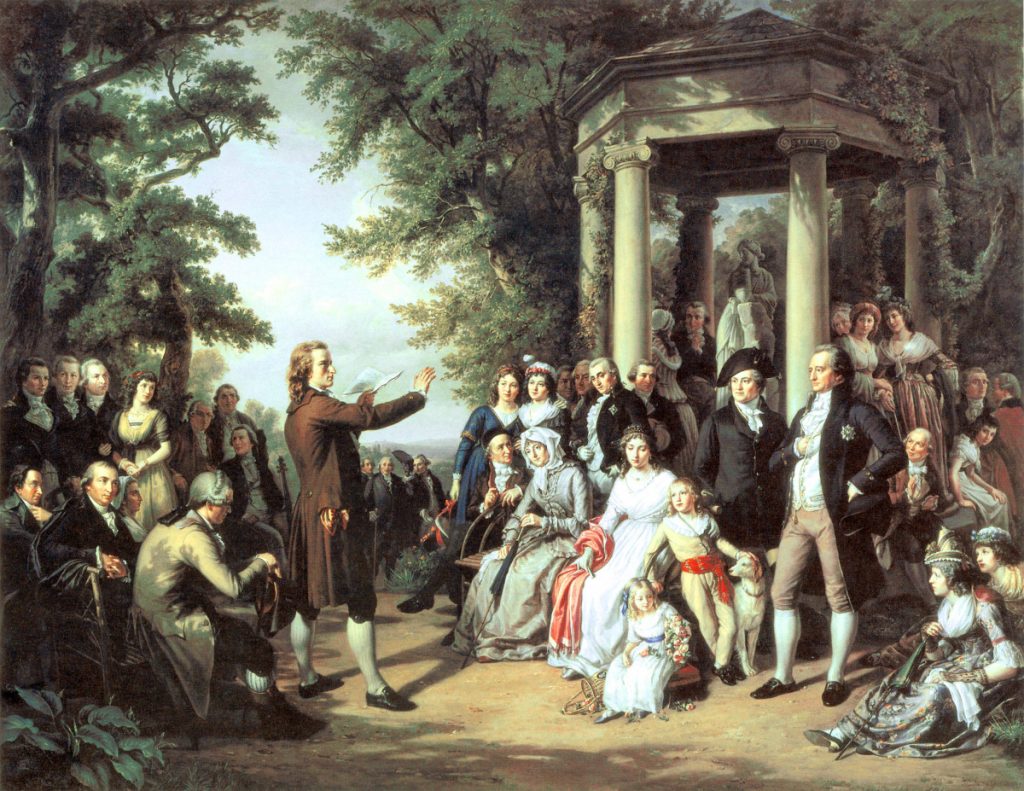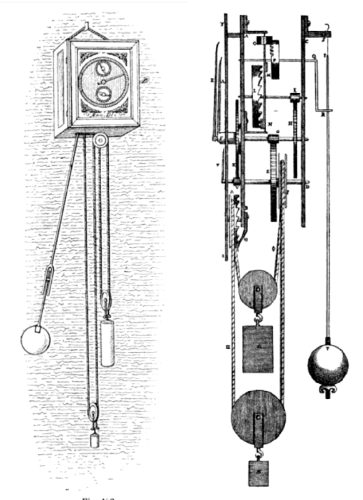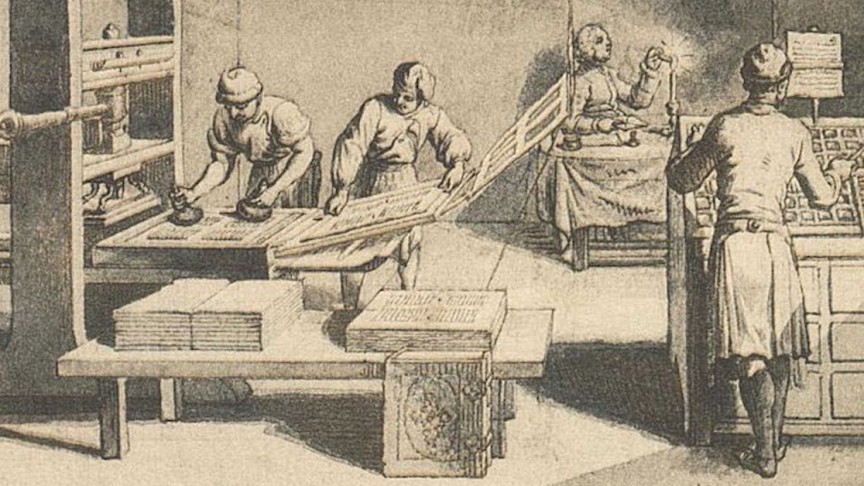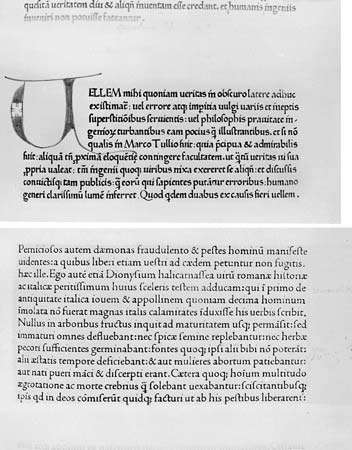The period between 1450 and 1750 included immense progress in a variety of topics. The Renaissance period (1300-1600) ended the Middle Ages and began an intellectual and artistic revolution. Instead of putting all faith in the church for understanding, many started to look back on theories of the great minds and start freethinking themselves. The Baroque period (1600-1750) had a lot of controversy between the church and the crown. This period was not only an exciting dramatic time for art but known as the Age of Enlightenment. Finally, The Rococo period (the mid-1700s) was a much lighter style in the sense of art. This period introduced elements of nature into architecture, interiors, and fashions and created more elegant typography styles.
Tools and Typography
The Enlightenment took place in Britain, France, and throughout Europe where people were questioning traditional authority and embracing that humanity could be improved through freethinking and change. Isaac Newton, Daniel Fahrenheit, Benjamin Franklin, and Alessandro Volta are some of the great scientists and inventors during the Age of Enlightenment that helped pave the way for the industrial revolution.

One great invention credited to Christiaan Huygens was the pendulum clock in 1656. This resulted in timekeeping becoming much more accurate than ever before.

The invention of the printing press was a significant contributor to the Renaissance’s intellectual revolution. This allowed ideas to be shared more widely.

Printing moved outward from Germany in 1464 and established itself first in Italy. They opened their press in Subiaco in 1465 and almost immediately produced a Cicero (De oratore) printed in an early and interesting Antiqua type that would with time become roman.

Bibliography
“Enlightenment”. HISTORY, 2020, https://www.history.com/topics/british-history/enlightenment. Accessed 10 Oct 2020.
Jarus, Owen. “What Was The Enlightenment?”. Livescience.Com, 2019, https://www.livescience.com/55327-the-enlightenment.html. Accessed 10 Oct 2020.